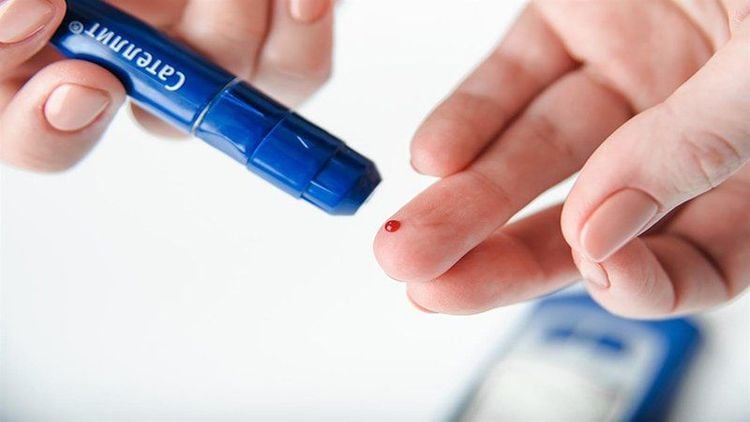Latent autoimmune diabetes in adults (LADA), is also called type 1.5 diabetes. Similar to type 1 diabetes, it occurs when the immune system creates antibodies that attack insulin-producing cells in the pancreas. So, can LADA be cured?
1. What is LADA Autoimmune Diabetes?
LADA progresses slowly and is sometimes known as type 1.5 diabetes. Similar to type 1 diabetes, LADA occurs when the pancreas stops producing enough insulin. This can be caused by certain toxicants that damage insulin-producing cells in the pancreas. However, unlike type 1 diabetes, individuals with LADA do not require long-term insulin treatment after diagnosis.
Many researchers believe that LADA is a subtype of type 1 diabetes, while others do not recognize it as a separate form of diabetes. One hypothesis suggests that diabetes occurs on a continuum, with LADA lying between type 1 and type 2 diabetes.
Initially, LADA can be managed by controlling blood sugar levels through diet, maintaining a healthy weight, exercising, and possibly taking certain medications. However, as the body gradually loses its ability to produce insulin, patients will eventually require insulin therapy.

More research is needed to establish the best treatment for LADA. Similarly to other types of diabetes, patients will need close monitoring to minimize the progression of diabetes and potential complications.
2. Diagnosis of LADA
Individuals with LADA are typically over 30 years old, which is older than the usual age of onset for type 1 diabetes. Since the patient's pancreas still produces insulin initially, LADA is often misdiagnosed as type 2 diabetes.
The only way to confirm the diagnosis of LADA is through a blood test. Doctors will check for antibodies against insulin-producing cells in the pancreas as well as the levels of C-peptide.
If you have been diagnosed with type 2 diabetes but your symptoms do not improve with medication, or you have experienced recent unexplained weight loss, consult your doctor about the risk of LADA and how your treatment may be adjusted.
Some experts believe that starting insulin therapy immediately after diagnosis can help sustain the beta-cell function. Therefore, early and accurate diagnosis is critical.

3. Treatment of LADA
Can LADA be cured? Like the other types of diabetes, the goal of LADA treatment is to achieve good blood sugar control and prevent complications. Due to the gradual destruction of beta cells over time, patients must select the treatment regimen to preserve beta-cell function.
LADA develops because the body does not produce enough insulin. However, as the early disease progress may be slow, oral medications used for type 2 diabetes may be effective. If the patient is overweight or obese, a weight loss plan with a healthy diet and increased physical activity is needed.
As beta-cell function declines, oral hypoglycemic drugs lose their ability to maintain blood sugar levels after meals and during fasting. At this stage, patients are at a higher risk of oxidative stress - a key mechanism in the development of diabetic complications. People with LADA may test positive for at least one of the antibodies associated with type 1 diabetes. When the body stops producing sufficient insulin, patients will require insulin therapy to treat LADA. Typically, insulin therapy is needed about five years after diagnosis, but using insulin earlier can limit chronic complications. Studies show that starting insulin therapy within one year of diagnosis helps slow the process of beta cell destruction. Furthermore, early insulin treatment improves metabolic control, insulin secretion, and the autoimmune response against beta cells.
Overall, insulin is the primary treatment for LADA. There are various types of insulin and treatment regimens, and the required dosage may vary daily. Therefore, patients with LADA should frequently monitor blood sugar levels through regular blood sugar tests.

4. Complications and Prognosis of LADA
The life expectancy of individuals with LADA is similar to that of other types of diabetes patients. Previously, individuals with type 1 diabetes had shorter lifespans. However, diabetes treatment methods have significantly improved. With proper disease management, patients can achieve normal life expectancy.
Prolonged high blood sugar levels can lead to complications such as kidney disease, cardiovascular issues, eye diseases, and nerve damage. Thyroid disease is also more common in individuals with LADA than in those with type 2 diabetes. They have slower wound healing capability and are more susceptible to infections. Many of these complications can be prevented with good blood sugar control.
Currently, there is no method to prevent LADA. Similarly to type 1 diabetes, genetic factors may play a certain role. Early and accurate diagnosis, combined with strict symptom management, is the best way to avoid dangerous complications.
In summary, LADA symptoms may progress gradually, and patients may not require diabetes treatment for months or years after diagnosis. Initially, individuals with LADA can take type 2 diabetes medications combined with dietary and lifestyle changes. Later, as the body damages the insulin-producing cells in the pancreas, insulin therapy will be needed to control blood sugar levels.
To arrange an appointment, please call HOTLINE or make your reservation directly HERE. You may also download the MyVinmec app to schedule appointments faster and manage your reservations more conveniently.
To arrange an appointment, please call HOTLINE or make your reservation directly HERE. You may also download the MyVinmec app to schedule appointments faster and manage your reservations more conveniently.








